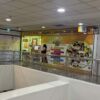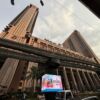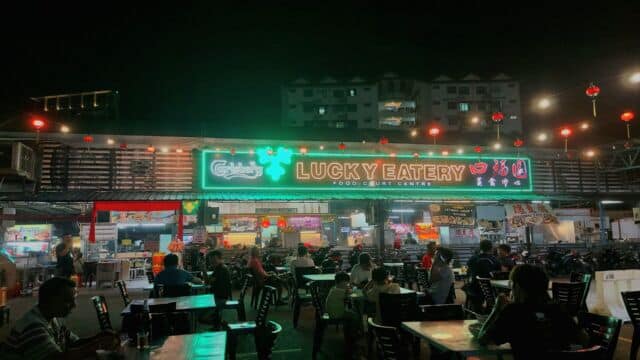Hin Bus Depot, Cultural Space
Photo: WIlson Khor
Hin Market | 2,500 words
“Hey, long time no see!”
“I haven’t been seeing your booth nowadays! Doing well?”
“Yes, yes—this is new! Wanna try?”
I’ve been visiting Hin Bus Depot’s Art & Crafts Market again recently.
Once a place I frequented weekly, I can’t help but feel at home in the hustle and bustle of this Sunday market. I exchange smiles and greetings with familiar vendors as I walk past their stalls—some of us go all the way back to 2016, when they caught sight of me lugging boxes and wheeled suitcases, each filled with assorted zines, into this market for the very first time.
For many of the vendors back then, as well as many visitors, zines were something they had never seen before encountering me. Even now, the literary tastes and worldviews of the general Malaysian population are still predominantly reserved and conservative—zine and indie culture are often perceived as both foreign and suspicious. I’ve lost count of the number of times a random uncle or auntie has asked whether making zines or writing poetry is enough to make a living, or gasped at the epiphany that youngsters nowadays can publish love and breakup confessionals, or political satire or queer discourse, for the whole world to see in ways that they were never allowed when they were younger.
More people need to know. More people need to see. More people need their minds renewed and challenged to keep up with the times. Be it a vendor or a customer, an old-fashioned Boomer or a young Gen-Zer still figuring out how they should juggle the realities of adulthood with their dreams and desire to give voice to things that matter, it’s for dialogues and exchanges of ideas that I keep helping to promote local indie literature and zine authors in this market.
*
Hin Bus Depot, originally a depot building and transit station for blue Hin Bus Company buses, was selected back in 2014 as the venue to host Ernest Zacharevic’s Art is Rubbish is Art exhibition. The famed exhibition (along with the city’s effort to revitalise itself with the help of Ernest’s street murals during that same period) met with great success. Its potential as a venue recognised, the once-abandoned depot building was subsequently repurposed, reopening as a permanent art space.
Since then—instead of housing aging buses that drove back and forth past Penang’s iconic KOMTAR tower—the place that is still called “Hin Bus” has grown and expanded into one of the city’s major arts hubs, housing gallery exhibitions, community events, competitions and film screenings, and giving space and amenities to local creatives.
While Hin Bus is most known for its gallery that features exhibitions by both local and international artists, the weekend Art & Crafts Market is its biggest crowd-puller. When I first came across the market I was enthralled by its vibrancy, from the colors of its wall murals to the tourist traffic and energetic vendors, and shocked by how easy and accessible it was to set up a booth. It was a time when zine-making and indie publishing was still foreign to me. I was merely a fledgling poet who figured that having my work printed and stapled at my neighborhood printing shop was the most practical and cost-effective means to have physical publications—and by extension, that setting up a booth in Hin Bus was the most straightforward way to get them noticed.
It was only later, when I crossed paths here with other zinesters (it turns out that Malay-speaking punk circles have been making underground music and skating fanzines in Malaysia since the mid 80s) and backpackers (who told me of the zine scene back in their home countries) that I finally learned what zines and chapbooks are. From there I began to see the broader value and significance zines could have in the Penang literary scene: just like how starting a booth in Hin Bus market can help new artists and creators start their ventures, zines are the most accessible and affordable means for writers to begin their writing and publishing journeys.
A lot of things have changed from when I first started here. From initially occupying just the shaded wooden deck area in the center of the building’s inner walled compound, which you access from the main entrance by passing through the gallery, the market has greatly expanded over the past decade, sprawling over the surrounding lawn. Uncle Lim, known in the market for his mouth-watering Assam laksa, and the other food vendors are now given tented and more spacious stalls on that lawn. There’s also a designated busking area now, complete with basic sound system and rows of reclining chairs for the audience to lounge on. While the buskers who grace the space mostly play covers of trending pop songs, there are occasions when someone will captivate the crowd with one of their originals.
At the back of the inner compound area is where many small businesses and organizations are found including Ruang Kongsi, a community space and library, and Book Island, an independent bookstore specializing in Chinese-language indie books, the only one of its kind on Penang island. Visitors to Ruang Kongsi can read all sorts of books there—especially locally-published works related to social awareness, democracy, and human rights, all for free. Book Island, on the other hand, offers an eclectic selection of Chinese books, both local and from across Asia. I’ve come across a collection of oral accounts of the May 13th Incident, and a handy guidebook explaining durians in Penang, including the histories of each breed, where to best find them, and the chemical compounds that make them so irresistible.
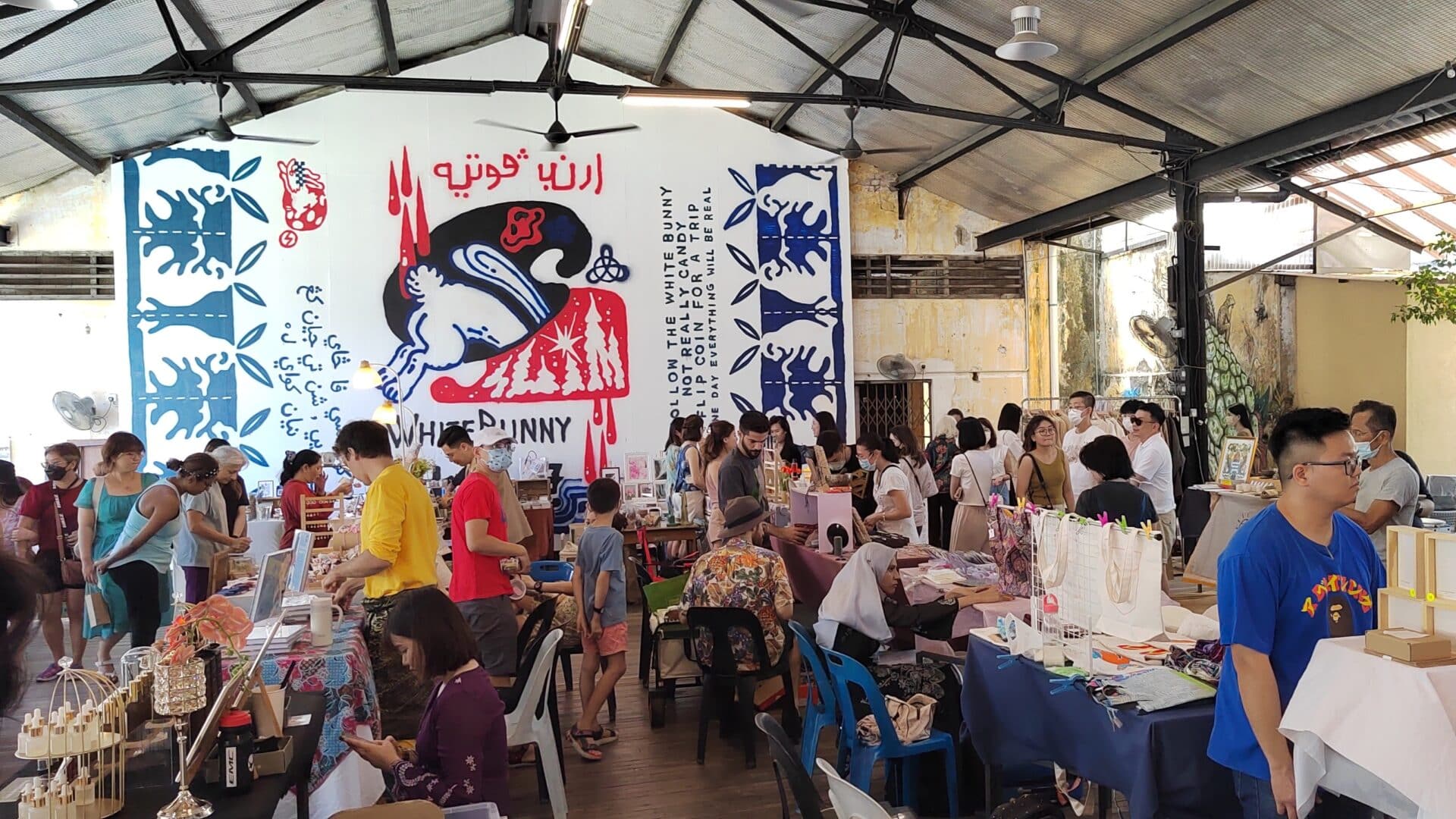


The expansions to Hin Bus reflect changing trends in George Town. Along with the physical changes I see a shift in mentality, a growing appreciation and acceptance of indie art, crafts, and startups as part of the city’s everyday life and ecosystem—with Hin Bus in the center of it all. Rather than a static focus on preserving only the old artisan trades and heritage crafts—making joss-sticks, weaving beaded shoes, carving signboards—a focus that would mirror the preservation of the city’s aging buildings, I’m instead seeing a growing tendency to pursue and support new trades and crafts popular with the current generation, from coffee brewing and roasting, crocheting and anime fanart, to yoga and tarot reading.
Furthermore, Hin Bus with its focus on community-building, careful curation, and long-term sustainability is triggering a counter-cultural ripple, indirectly protesting the rampant gentrification of the city perpetuated by irresponsible parties and encouraging more and more people to find the courage to venture into new directions in life outside the conservative social conventions of the previous generation.
One of these people is Apple Ang. The first time I walked past her booth I was drawn to the mix of warm and melancholic tones of the hand-painted bookmarks she sells. The skies and oceans she paints remind me of the work of my favorite poet, Misuzu Kaneko. When I asked her for the story and concept behind her artwork, I learned that Apple’s story is one of transformation akin to that of Hin Bus: through starting her art business, painting has become her avenue to heal and ground herself emotionally as well as a bridge to connect her love for art and nature with other people. The business is also her answer to her search for purpose and direction: she was initially set for the corporate sector upon her graduation, but was derailed due to the pandemic.
Another is Sherra Yeong. As fellow foodies, we exchange café and restaurant recommendations, and given her experience as an ex-sommelier, I often seek her advice and opinions on liquor (I also seek sips from her homemade umeshu stash). Sherra is also someone with a lot of stories to tell, having come from East Malaysia and settled in Penang after falling in love with the island’s urban yet laid-back lifestyle, which she has written about in a self-published book called Local Outsider. Her stall here is her way of sharing her love for baking with everyone in the market. It was through Sherra that I started appreciating the wonders of British custard and learned how a freshly-baked liquor-infused fruitcake should taste. While her stall here is still a side business she runs during her free time, she hopes that it will pave the way to achieving her lifelong dream of someday owning her own shop baking delicious sweets, desserts, and pastries.
In between sips of my favorite latté at Wells Café (located to the back of the inner compound near the entrance of the recently-famous Au Jardin French restaurant) while getting away from the afternoon heat, I begin to see that the whole of Hin Bus Depot, from its market to its gallery space, is like a living organic creature, one that changes constantly. Like Heraclitus once said we can never step into the same river twice, there can never be two moments when Hin Bus—or George Town as a whole—will be exactly alike.
Many of the old vendors—whom I first met and sometimes operated alongside during my earlier days in the market—have found success and expanded their operations beyond their original stalls. Ana from Suka-suka and Jesie from Sew Cuddly have gathered enough capital to rent their own shop premises. Suka-suka has become a full-fledged lifestyle store located in a row of shophouses to the right of the gallery, featuring items and handmade crafts from Ana’s home state, Sarawak. Ana’s parents also now run Suka Ngirup at the back of the store, offering delicious Sarawakian-style coffee served with palm sugar. Sew Cuddly, on the other hand, has expanded its selection of hand-sewn products— tote bags, headbands, caps, and even pouches—all made by Jesie herself using an old-school mechanical sewing machine. Others have switched their business model to focus more on consignment and retail distribution after gaining enough brand visibility here, like Jenny from Uncang Tea, who now delivers her homemade teas to other places across the city.
I’ve changed as well. Going from a solo zine author to the proprietor of a small zine publishing house, I didn’t return to the booth I used to keep at Hin Bus after the pandemic restrictions in Malaysia loosened and the market reopened in 2022. I had also started working in a language arts center by then, as well as running a book club during the weekends to give people a taste of local Malaysian literature. Nothing stays the same—and as we each go our own ways at the end of our respective seasons at Hin Bus, newer artists and startups take our places, each adding their talents, crafts, and specialties to the already-dynamic market.
I started seeing Dayana and Kévin operating under Bulan Press at the market sometime last year, bearing Penang Makan, a cookbook depicting recipes of Penang street food. Penang Makan reads like a personal letter, one that can be by the side of readers gently guiding and instructing them every step of the way as they cook. It’s also a taste of what it’s like to live in everyday George Town and how we Penangites feel at home thanks to the daily hawker staples of one of Asia’s most diverse food cities.


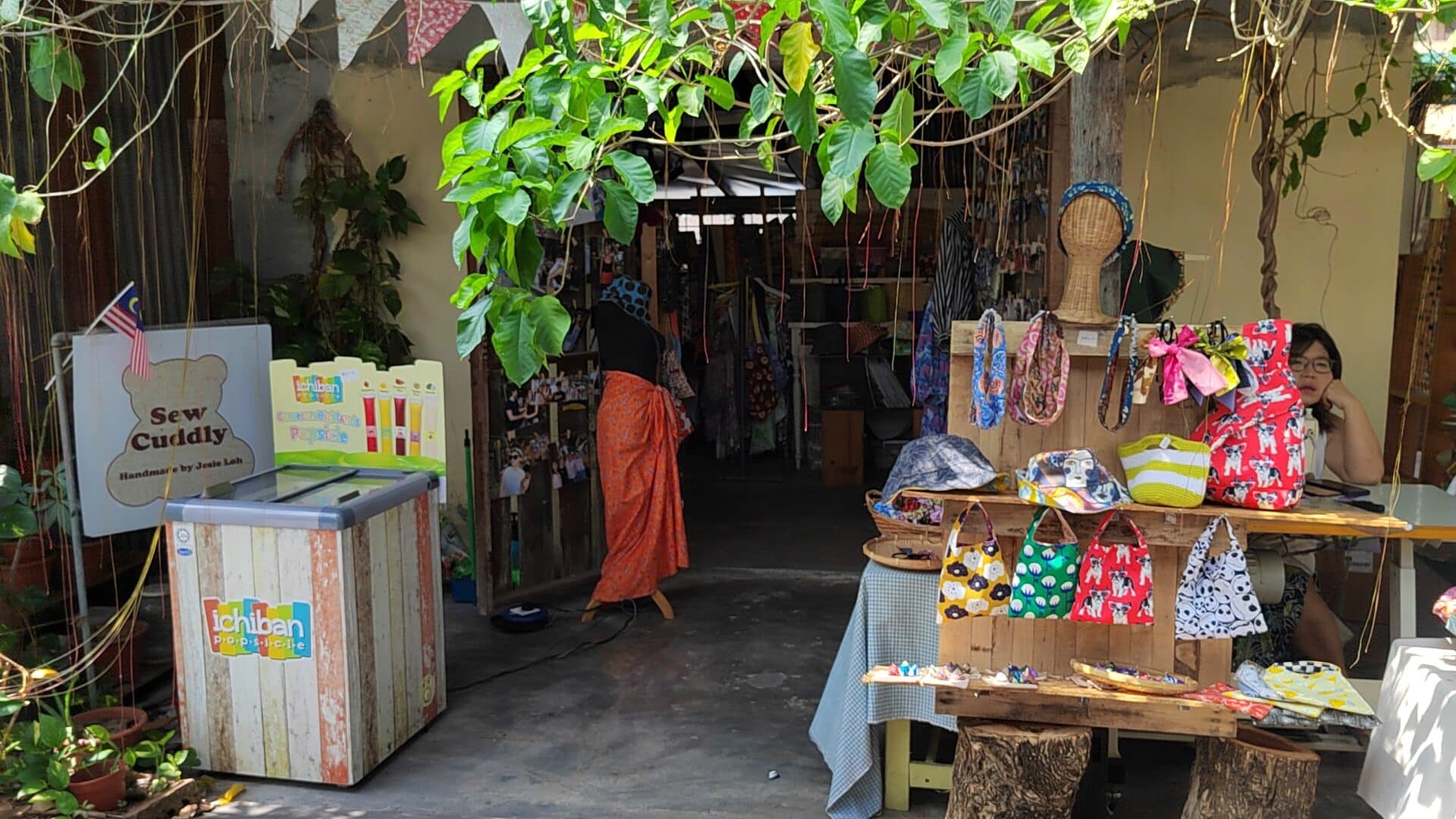
As a fellow publisher, it brings me much joy to see them thriving in the market—all the more because I’ve personally seen how much the Art & Crafts Market in Hin Bus has done for my publishing house. Through the visibility offered, I can see how Penang Makan and Bulan Press is playing a big role in sharing and preserving an essential aspect of George Town’s heritage as well as breathing new life into the city’s niche indie publishing scene.
Finishing my last drop of coffee and returning the now-empty cup to the barista over the counter, I recall the times when I once lamented—both in thought and in verse—the disappearing artisan trades of George Town, and the sight of whole streets swallowed up by the encroachment of tacky souvenir shops and profiteering boutique cafés. I was once afraid of the possibility of George Town losing its UNESCO World Heritage Site status, and along with it, the idyllic charm I had loved about the city.
Yet look at Hin Bus. A huge amount of expansion and hubbub has gone on within this place’s walls in the years I’ve been here – a transformation. At the same time, the Hin Bus Depot building itself has remained mostly unchanged. The art deco architecture remains intact (and most importantly, respected), preserving its legacy as one of the most state-of-the-art buildings in the city during its heyday, alongside others like Odeon Cinema and India House. The cultural activity inside, meanwhile, is at once a departure from George Town’s past and very much in keeping with it. Hin Bus today has become a role model for how the preservation of heritage and a creative embrace of progress can go hand-in-hand. After all, what meanings do buildings have without people to inhabit them?
*
“I’ve passed by Hin Bus so many times, but nobody told me there’s an art market inside. I’ve never heard of zines. Why would you make them?”
On the journey home I converse with my Grab driver, a friendly bespectacled man in his early 50s. Living around 90 minutes away in the neighboring state of Kedah, he started travelling to George Town on weekends recently to supplement his income (and give his retirement plan a “test drive”, as he puts it) by ferrying the city’s many tourists around.
I tell bits of stories and encounters in Hin Bus that are still fresh in my mind. I then listen to his nostalgia for what life was like in Alor Setar during post-Independence Malaysia. He also shares with me his thoughts (peppered with bafflement and subtle hints of envy) on the new generations today, having so much more freedom and opportunities compared to the people of his generation. And just like that, in a conversation in a stranger’s car along the busy Lim Chong Eu Expressway on my way home, I see things linking up in an ouroboros circle, past and present intersecting once again.
© Wilson Khor
Commissioning editor: Anna Tan

